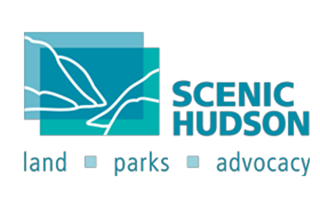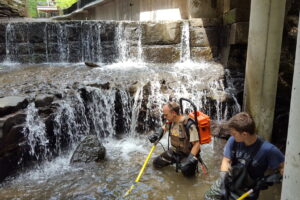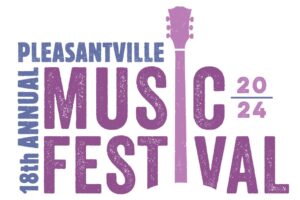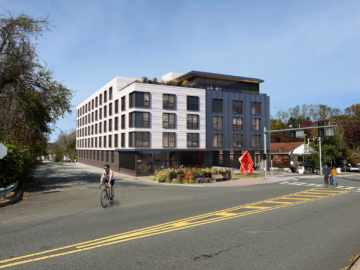 Online resources part of multi-pronged strategy to fuel community success with climate change response and lasting economic opportunity. Communities along the Hudson River from the Capital Region to New York City are facing rising water levels along with more frequent extreme weather,
Online resources part of multi-pronged strategy to fuel community success with climate change response and lasting economic opportunity. Communities along the Hudson River from the Capital Region to New York City are facing rising water levels along with more frequent extreme weather,
such as recent hurricanes Irene and Sandy and tropical storm Lee. Scenic Hudson is providing a dynamic mix of resources to help catalyze community-driven efforts to reduce impacts to people, property and nature—while also promoting economically vibrant and environmentally healthy riverfront communities.
Scenic Hudson’s newly launched online “adaptation tool box” (www.scenichudson.org/slr) offers an interactive map for visualizing various scenarios of where future high tides and flood zones will reach and how communities and natural resources might be affected. The website also features links to resources for shoreline adaptation, scientific data and even legal assistance. The new tool kit builds on recent analysis by Scenic Hudson of the impacts of sea level rise on the Hudson River, a series of related forums and workshops Scenic Hudson has been hosting since 2011, and the 2010 publication of Revitalizing Hudson Riverfronts, a groundbreaking blueprint for waterfront redevelopment in the region.
Sea Level Rise Mapper standout of Web tools
Scenic Hudson sees the Hudson’s rising waters as the greatest environmental challenge facing riverfront communities. Building consensus around balanced solutions to this massive, yet incrementally developing threat requires innovative approaches. Scenic Hudson has created an innovative interactive map of the Hudson from the federal dam in Troy to the northern boundary of New York City. The Sea Level Rise Mapper allows communities and stakeholders to create visualizations of future scenarios for how under water their riverfronts will be during normal high-tide conditions as well as flooding events.
By using Scenic Hudson’s SLR Mapper, communities can visualize impacts and develop adaptation plans by:
- creating maps showing the extent and impacts of inundation and flood zone expansion,
- understanding the locations of key built infrastructure and natural resources and their potential exposure to inundation or flooding,
- creating graphics that illustrate different sea level rise scenarios in specific communities or stretches of the river.
“We’ve invested in generating crucial data and compiling the best resources available so that we can offer a definitive set of tools to communities along the Hudson. As both a mission-driven organization and one that owns more than 1,000 acres of conserved land at the river’s edge, Scenic Hudson is pushing to catalyze immediate and long-range planning for a changing Hudson shoreline,” said Scenic Hudson President Ned Sullivan. “Our goal is to work toward a future that balances and reduces risks to people, property and nature and holds the promise of secure, thriving riverfront communities within a vibrant, healthy ecosystem.”
SLR Mapper will help create decisions amid competing priorities—and high stakes
Home to nearly 100 municipalities and more than 12 million people, the Hudson’s 160 miles of estuarine river passes through conditions ranging from rural farming waterfront communities and rare freshwater tidal forests in the north to one of the world’s most densely populated urban centers in New York City, where the Hudson merges with the salty Atlantic Ocean.
Along these changing shorelines there are enormous resources at stake—including historic structures, revitalized riverfronts, critical public infrastructure, thousands of private landholdings, and more than 13,000 acres of globally important habitats that support bald eagles, endangered migratory fish and other species.
From its decades of working to protect the environment and support communities in the Hudson Valley, Scenic Hudson knew the key role that information and tools can play in facilitating balanced and smart decisions.
“On the one hand is the imperative to protect existing infrastructure and property. This creates great pressure to harden, raise or re-engineer shorelines regardless of cost or efficacy. The other hand presents the essential need to protect world-class natural resources so they continue to provide services that sustain people, nature and human activities. Achieving the optimal balance will require local and specific tactics that respond to realities at the water’s edge as well as coordinated regional action within a big-picture, long-range timeline,” said Scenic Hudson Director of Conservation Science Sacha Spector, Ph.D., who led Scenic Hudson’s efforts on the SLR Mapper.
“We’ve created a tool that will help people visualize the challenge of sea level rise and changing flooding risks along the Hudson. For the first time, decision makers and citizens will be able to see how the places they care about will be affected. They can use the mapper and adaptation resources to help them plan bright futures for their waterfronts,” he added.
How the SLR Mapper was created
Scenic Hudson worked in partnership with the Hudson River National Estuarine Research Reserve to complete an estuary-wide sea level rise vulnerability assessment using Geographic Information Systems (GIS) tools. This identified the most important places where wetlands could be migrated landward, the highest priority public and private infrastructure where shoreline protection will be needed, and key areas where overlaps between these two realms will require balanced, more complex approaches.
Scenic Hudson then made use of its decades of experience engaging communities in land use and conservation issues. The group understood how the right tools could allow diverse stakeholders to see the challenge at hand, identify what is important to them and build consensus. Knowing that sea level rise adaptation is extremely well suited to map-based planning techniques that invite participatory dialog, the group developed the Web-based tool kit.
Other groups that provided data for the project include Dr. Roger Flood and students at SUNY Stony Brook, New York State Department of Environmental Conservation Hudson River Estuary Program, and the U.S. Environmental Protection Agency. For a full description of methods and data, see the link at the bottom of the About the SLR Mapper page.
Funders who made the SLR Mapper possible include the Whitney Foundation and Sean Eldridge, founder and president of Hudson River Ventures.
Editor’s note: To appreciate some of what is at stake with sea level rise in the Hudson Valley, if New York State’s worst-case scenario projections prove true (this info is part of Scenic Hudson’s Sea Level Rise web content—see heading Sea Level Rise Projections on the website), the following impacts would occur:
At risk of daily inundation if sea level rises by 72 inches
9,332 acres of land
6,911 People and 3,654 Households
11,980 acres of submerged aquatic vegetation and tidal wetlands
6 sewage treatment facilities
27 brownfields and 64 hazardous materials sites
About Scenic Hudson—Celebrating Our 50th Anniversary in 2013
Scenic Hudson works to protect and restore the Hudson River and its majestic landscape as an irreplaceable national treasure and a vital resource for residents and visitors. A crusader for the valley since 1963, we are credited with saving fabled Storm King Mountain from a destructive industrial project and launching the modern grass-roots environmental movement. Today with more than 25,000 ardent supporters, we are the largest environmental group focused on the Hudson River Valley. Our team of experts combines land acquisition, support for agriculture, citizen-based advocacy and sophisticated planning tools to create environmentally healthy communities, champion smart economic growth, open up riverfronts to the public and preserve the valley’s inspiring beauty and natural resources. To date Scenic Hudson has created or enhanced more than 50 parks, preserves and historic sites up and down the Hudson River and conserved over 30,000 acres.
For more information, visit www.sh50.org and www.scenichudson.org






